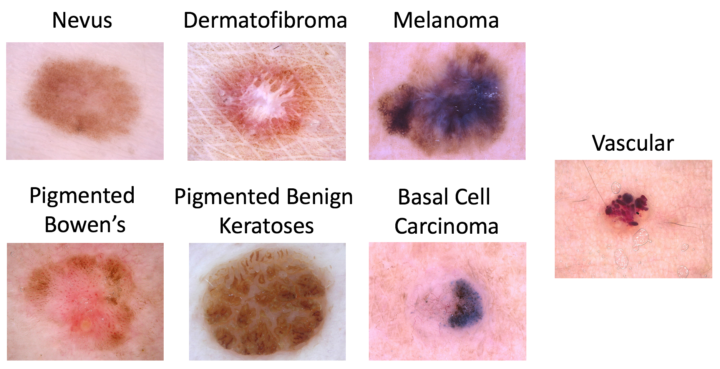ISIC 2019: Skin Lesion Analysis Towards Melanoma Detection - Task 1
Task 1: Lesion diagnosis with images only
 Capitation example
Capitation example
Aim
The goal for ISIC 2019: Task 1 is classify dermoscopic images without meta-data among nine different diagnostic categories:
- Melanoma
- Melanocytic nevus
- Basal cell carcinoma
- Actinic keratosis
- Benign keratosis (solar lentigo / seborrheic keratosis / lichen planus-like keratosis)
- Dermatofibroma
- Vascular lesion
- Squamous cell carcinoma
- None of the others
Background
Skin cancer is a major public health problem, with over 5,000,000 newly diagnosed cases in the United States every year. Melanoma is the deadliest form of skin cancer, responsible for an overwhelming majority of skin cancer deaths. In 2015, the global incidence of melanoma was estimated to be over 350,000 cases, with almost 60,000 deaths. Although the mortality is significant, when detected early, melanoma survival exceeds 95%.
About Dermoscopy
As pigmented lesions occurring on the surface of the skin, melanoma is amenable to early detection by expert visual inspection. It is also amenable to automated detection with image analysis. Given the widespread availability of high-resolution cameras, algorithms that can improve our ability to screen and detect troublesome lesions can be of great value. As a result, many centers have begun their own research efforts on automated analysis. However, a centralized, coordinated, and comparative effort across institutions has yet to be implemented. Dermoscopy is an imaging technique that eliminates the surface reflection of skin. By removing surface reflection, visualization of deeper levels of skin is enhanced. Prior research has shown that when used by expert dermatologists, dermoscopy provides improved diagnostic accuracy, in comparison to standard photography. As inexpensive consumer dermatoscope attachments for smart phones are beginning to reach the market, the opportunity for automated dermoscopic assessment algorithms to positively influence patient care increases.
Results
